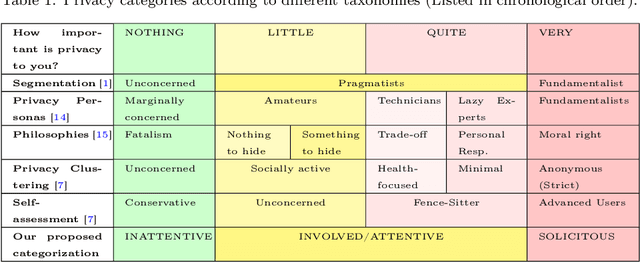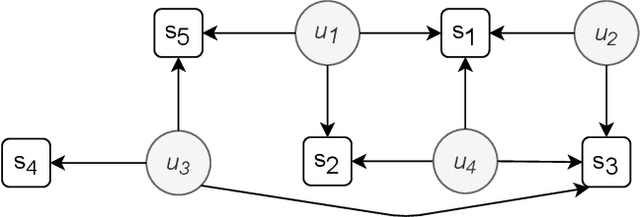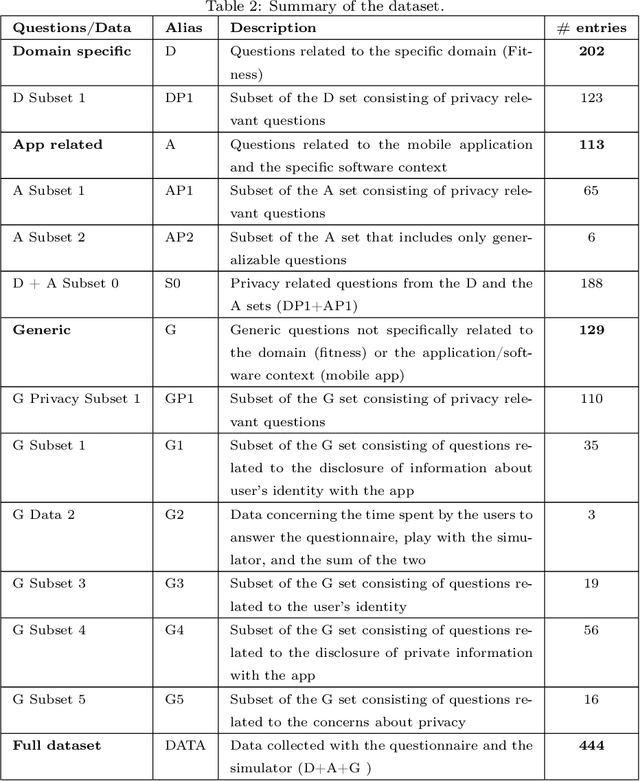Paola Inverardi
Social, Legal, Ethical, Empathetic, and Cultural Rules: Compilation and Reasoning (Extended Version)
Dec 15, 2023
Abstract:The rise of AI-based and autonomous systems is raising concerns and apprehension due to potential negative repercussions stemming from their behavior or decisions. These systems must be designed to comply with the human contexts in which they will operate. To this extent, Townsend et al. (2022) introduce the concept of SLEEC (social, legal, ethical, empathetic, or cultural) rules that aim to facilitate the formulation, verification, and enforcement of the rules AI-based and autonomous systems should obey. They lay out a methodology to elicit them and to let philosophers, lawyers, domain experts, and others to formulate them in natural language. To enable their effective use in AI systems, it is necessary to translate these rules systematically into a formal language that supports automated reasoning. In this study, we first conduct a linguistic analysis of the SLEEC rules pattern, which justifies the translation of SLEEC rules into classical logic. Then we investigate the computational complexity of reasoning about SLEEC rules and show how logical programming frameworks can be employed to implement SLEEC rules in practical scenarios. The result is a readily applicable strategy for implementing AI systems that conform to norms expressed as SLEEC rules.
Leveraging Privacy Profiles to Empower Users in the Digital Society
Apr 01, 2022



Abstract:Privacy and ethics of citizens are at the core of the concerns raised by our increasingly digital society. Profiling users is standard practice for software applications triggering the need for users, also enforced by laws, to properly manage privacy settings. Users need to manage software privacy settings properly to protect personally identifiable information and express personal ethical preferences. AI technologies that empower users to interact with the digital world by reflecting their personal ethical preferences can be key enablers of a trustworthy digital society. We focus on the privacy dimension and contribute a step in the above direction through an empirical study on an existing dataset collected from the fitness domain. We find out which set of questions is appropriate to differentiate users according to their preferences. The results reveal that a compact set of semantic-driven questions (about domain-independent privacy preferences) helps distinguish users better than a complex domain-dependent one. This confirms the study's hypothesis that moral attitudes are the relevant piece of information to collect. Based on the outcome, we implement a recommender system to provide users with suitable recommendations related to privacy choices. We then show that the proposed recommender system provides relevant settings to users, obtaining high accuracy.
Exosoul: ethical profiling in the digital world
Mar 30, 2022



Abstract:The development and the spread of increasingly autonomous digital technologies in our society pose new ethical challenges beyond data protection and privacy violation. Users are unprotected in their interactions with digital technologies and at the same time autonomous systems are free to occupy the space of decisions that is prerogative of each human being. In this context the multidisciplinary project Exosoul aims at developing a personalized software exoskeleton which mediates actions in the digital world according to the moral preferences of the user. The exoskeleton relies on the ethical profiling of a user, similar in purpose to the privacy profiling proposed in the literature, but aiming at reflecting and predicting general moral preferences. Our approach is hybrid, first based on the identification of profiles in a top-down manner, and then on the refinement of profiles by a personalized data-driven approach. In this work we report our initial experiment on building such top-down profiles. We consider the correlations between ethics positions (idealism and relativism) personality traits (honesty/humility, conscientiousness, Machiavellianism and narcissism) and worldview (normativism), and then we use a clustering approach to create ethical profiles predictive of user's digital behaviors concerning privacy violation, copy-right infringements, caution and protection. Data were collected by administering a questionnaire to 317 young individuals. In the paper we discuss two clustering solutions, one data-driven and one model-driven, in terms of validity and predictive power of digital behavior.
 Add to Chrome
Add to Chrome Add to Firefox
Add to Firefox Add to Edge
Add to Edge